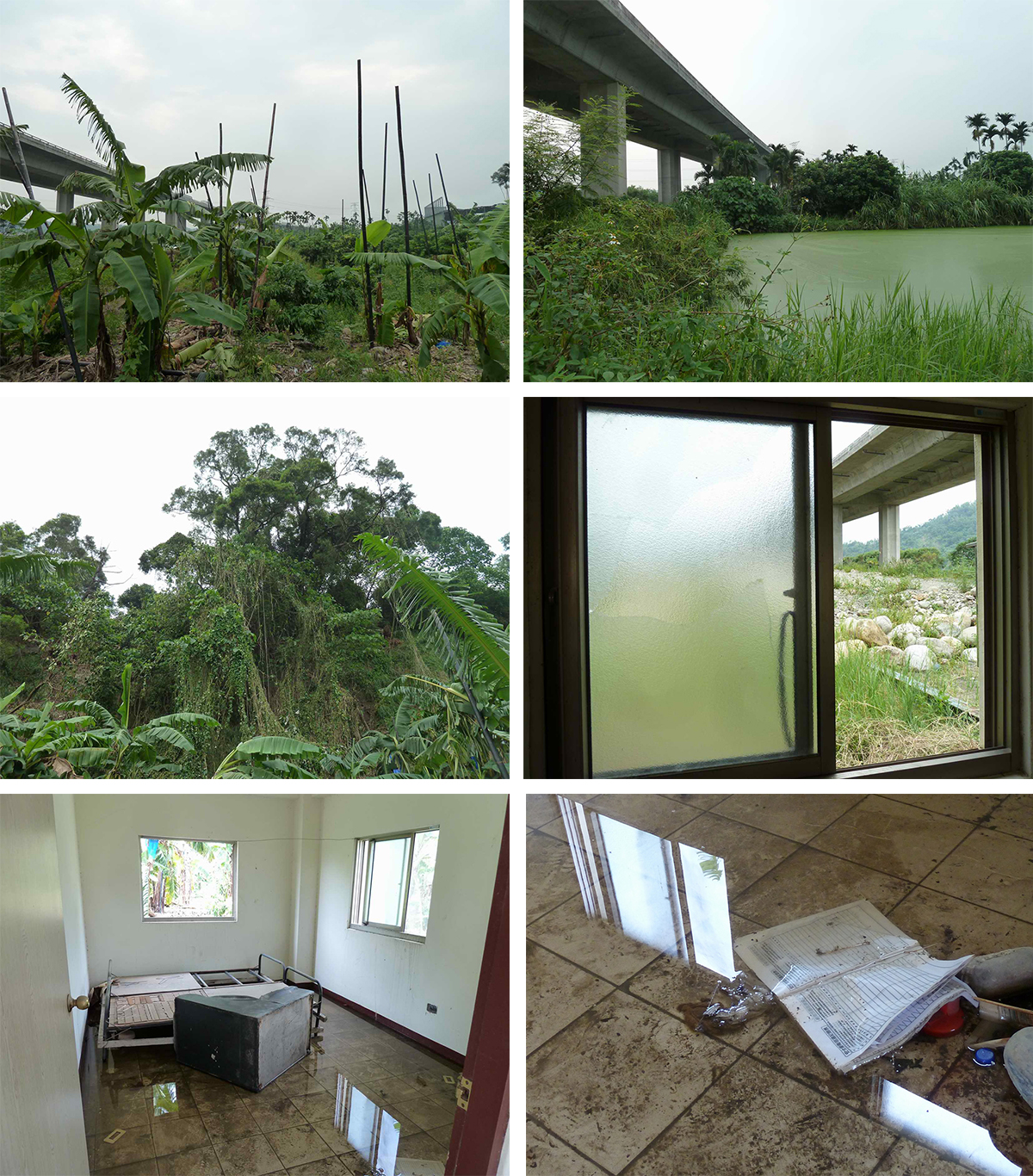This is The Last Film
1
We came to this place because we were making a film.
Our car drove along the winding road under the overpass. We passed through the water and the mud that had accumulated on the road, and ran into all sorts of flourishing vegetation: banana trees that were still slanting from the typhoon, creepers on the top of a nearby slope that were growing without bounds.
Between that slope entirely covered with plants and the overpass leading to an endlessly faraway place, a single-story house sat, solitary. It was the protagonist that we had been seeking for our film.
It was a mid-summer afternoon and the waves of cicada songs poured into my ears.
2
I had heard about this house, that is was made after a disaster but had actually become a disaster in itself.
Ten years ago, after a natural disaster and out of the need for temporary management, the local government had built this house within a short amount of time, but somehow it had never been used.
When people finally learned about the enormous amount of money spent on its construction, the house became evidence of a man-made disaster. It sealed its fate and was abandoned, without hope of reversal.
I had seen photos of it long ago, but this was the first time I actually saw the building and its environment.
Ten years had passed and still it sat isolated between two extremely different situations: on one side, a sub-tropical forest, and on the other, a highway heading into the city. Both were growing and expanding in their own occupied spaces, recklessly.
Only this house remained the same. Wind and rain hadn’t washed away its shameful history; instead they had immersed and accelerated its decay. It was almost an impossible situation, yet there was something about it that was attractive, that made us seek it out. What made the air here—a place divided so abruptly by forest and highway –seem so familiar to us?
3
Here, vegetation was growing on the slope and in the field, even around the cement pillars of the overpass, all so naturally and idyllically.
Checking carefully the pattern of slit in the stream channels, one could sense a strange kind of energy here.
We weren’t seeing some wonderful kind of scenery here, but it was enough to make a film that was “just about here”. If you are patient enough, you could make a long film here in real-time; long enough to witness how the plants grow, how the rotting house deconstructs itself, and how the overpass slowly becomes a pavement for people to walk upon.
If we were going to make the last film on Earth (humans may have made the first film on Mars recently), we wouldn’t need to go to the South Pole. This place would be an ideal location to shoot this final film–because of its decay, because of its sub-tropical humidity and toxins, and because of the way it has been trapped between plants and the highway. Because of all these things, this place, as oddly deserted as it is, should definitely become the scenery of the last film on Earth. It would be proof within itself that the nature of film is not production, but existence.
(Hu Fang)
Text: Hu Fang
Photo: Hu Fang
© 2018 the Author and The Pavilion
